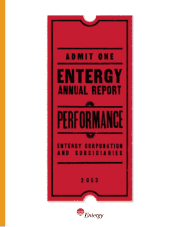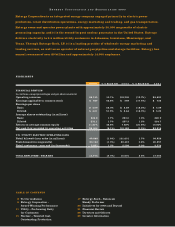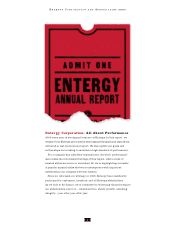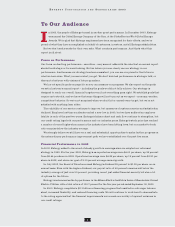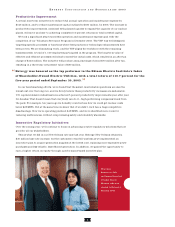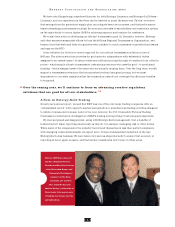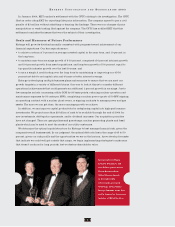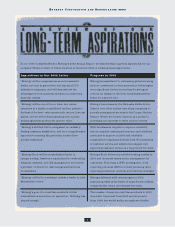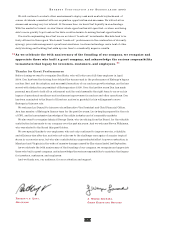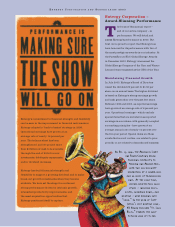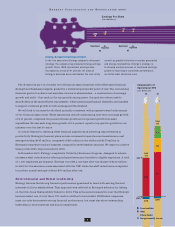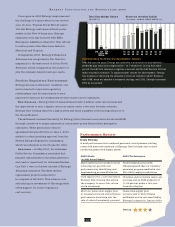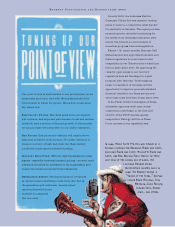Entergy 2003 Annual Report Download - page 7
Download and view the complete annual report
Please find page 7 of the 2003 Entergy annual report below. You can navigate through the pages in the report by either clicking on the pages listed below, or by using the keyword search tool below to find specific information within the annual report.
In January 2004, EKT reached a settlement with the CFTC relating to its investigation. The CFTC
filed an order citing EKT for reporting false price information. The company agreed to pay a civil
penalty of $3 million without admitting or denying the findings. There were no charges of price
manipulation or wash trading filed against the company. The CFTC has notified EKT that this
settlement concludes the issues that were the subject of their investigation.
Goals and Measures of Future Performance
Entergy will grow its dividend annually consistent with progress toward achievement of our
financial aspirations. Our key aspirations are:
to achieve a return of 9 percent on average invested capital in the near term, and 10 percent in
the long term;
to maintain near-term earnings growth of 8-10 percent, comprised of 6 percent intrinsic growth
and 2-4 percent growth from asset acquisitions, and long-term growth of 5-6 percent, equal to
top-quartile industry growth over the last 20 years; and
to earn a single A credit rating over the long term by maintaining or improving our 45-50
percent net debt to net capital ratio and 4 times or better interest coverage.
Entergy is developing multiple business plans and scenarios to ensure that we can meet our
growth targets in a variety of different futures. One way to look at this is to consider different
operational achievements that could generate an additional 1 percent growth in earnings. Just a
few examples include: increasing utility ROE by 20 basis points, reducing nuclear operation and
maintenance expenses by 50 cents per MWh, completing a nuclear power uprate of 50 MW, signing
an operating contract with a nuclear plant owner, or signing contracts to manage power and gas
assets. The more we can get done, the more earnings growth we achieve.
In addition, we can improve capital productivity by redeploying capital into high-performance
investments. We project more than $3 billion of cash to be available through the end of 2006 for
new investments, debt/equity repayments, and/or dividend increases. Our acquisition priorities
have not changed. They are: gas pipelines and gas storage; nuclear generating plants and fossil
plants which can be used to meet the needs of our utility customers.
We determine the optimal capital structure for Entergy to best manage financial risk, given the
company’s overall business risk. In our judgment, the optimal debt ratio lies in the range of 45 to 50
percent, given our risk profile and the opportunities we see on the horizon. As we develop forecasts
that indicate we could well get outside that range, we begin implementing strategies to make sure
that doesn’t continue for long periods, lest we destroy shareholder value.
ENTERGY CORPORATION AND SUBSIDIARIES 2003
Entergy officers Wayne
Leonard, Don Hintz, and
Curt Hébert gather at the
Platts/
BusinessWeek
Global Energy Awards
in December 2003,
with awards presented
to Entergy as the Global
Energy Company of the Year,
and to Leonard as the energy
industry’s CEO of the Year.
5

